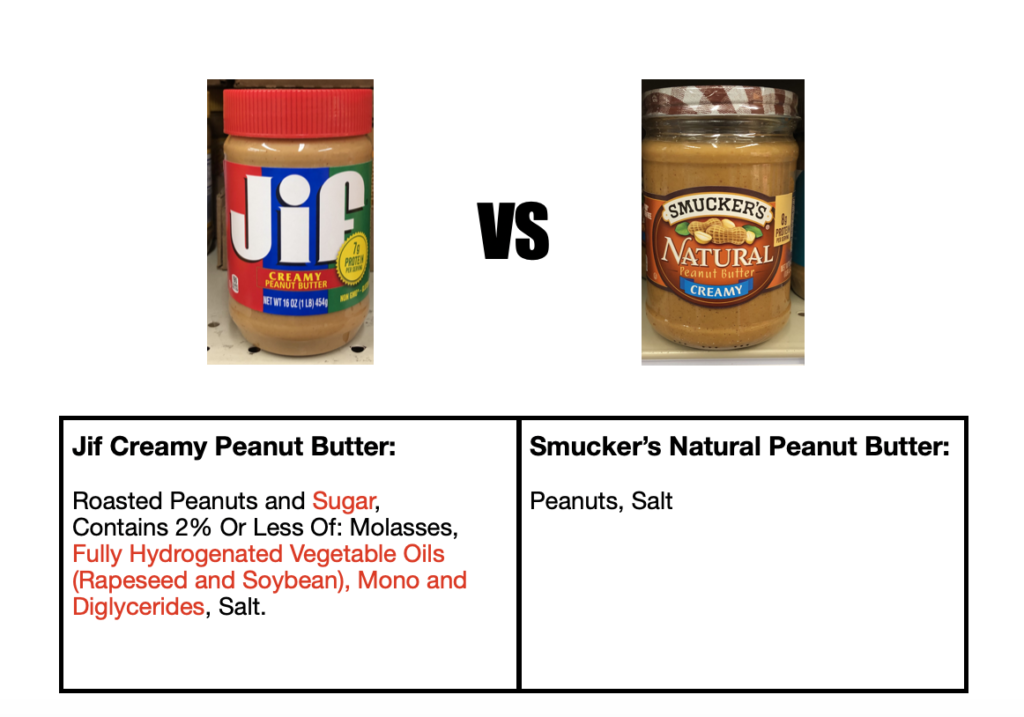There was a time when we remember always looking at the calorie content of food. Then we were told to also worry about the fat, and not just the fat, the saturated fat because that was the kind of fat that turned solid on our hips. Then there was trans fat, carbohydrates, blah, blah, blah. Not that all these things aren’t important, but it really can be so much simpler. Just read the ingredients.
 There are several things we have read that help keep us focused on the ingredient list and what to buy:
There are several things we have read that help keep us focused on the ingredient list and what to buy:
- Avoid food products that contain more than five ingredients
- Avoid it if there is sugar (or some form of sugar) within the top three ingredients
- Don’t eat anything that your great grandmother wouldn’t recognize as food
- Avoid food products that contain ingredients that a third grader cannot pronounce
If you think about these things, it will make it much simpler to figure out what is real food and what is not. There are so many choices out there; we have to keep simple rules like these in mind to keep us focused on buying real food. We read recently that “17,000 new products end up in the grocery store each year.” That is crazy! How much of that is real food? You can’t say that they have invented a new carrot or a new kind of grape. So, the majority of that is some form of processed food like substance.
So, keep it simple and don’t worry about all that other stuff, just read the ingredients!
 LEARN MORE ABOUT THE NAPKIN!
LEARN MORE ABOUT THE NAPKIN!
Boy, it’s hard to find some products that don’t have added sugar and long lists of ingredients–especially tomato-based products like ketchup, barbecue sauce, marinara sauce, pizza sauce, salsa. We stand looking and looking for the one with the shortest list of ingredients and fewest grams of sugar and are sometimes defeated. We begin thinking maybe we need to make these sauces at home!
I agree with what Beverly said above. A list of your favorite brands for some common things such as ketchup would be super helpful. I looked in the Extreme Home Makeover:Pantry Edition article and saw low sodium chicken granules listed, but having a brand to go with that would be helpful. Thoughts on things like the granules vs. products like Better Than Bouillon would also be helpful. Having a list of suggestions would be a bit of an “Easy Button” for people getting started on this journey. Having to start by reading all the labels all at once could be a bit daunting for some people.
Thanks Beverly and Elizabeth for your comments and feedback! We have spent a lot of time reading ingredient labels and discovery our favorite brands, and we love your idea of sharing this information so others don’t have to recreate the wheel! We are also huge fans of making your own whenever possible, especially when fresh, local, in-season ingredients are available!